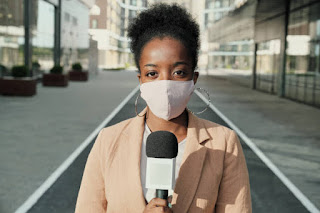Grace Morris
Morrisgrace36@gmail.com
gm245917@ohio.edu
In today’s world, the concept of trolling is a common phenomenon that many people will experience at some point during their time on the internet. Traditional trolling is often defined as individuals who leave offensive and hurtful messages intentionally on the internet to receive attention or upset another individual. However, the concept of trolling within the journalism profession has a slightly different meaning.
According to an article from Columbia Journalism Review, it states that trolling or “source hacking” is a “set of techniques for hiding the sources of problematic information, in order to permit its circulation in mainstream media.” It further states that “source hacking” or trolling is considered to be an indirect method to target journalists by “planting” or spreading false information in places where these professionals and other individuals are likely to see it.
 |
| Image curtsey of Morning Consult |
According to the report from Harvard University’s Kennedy School within the Columbia Journalism Review article, it states that these trolls utilize various methods to target journalists within the digital space. These methods consist of viral sloganeering, leak forgery, evidence collages, and keyword squatting. Viral sloganeering consists of “repackaging reactionary talking points for social media and press amplification”; Leak forgery involves “prompting a media spectacle by sharing forged documents”; Evidence collages are “documents made up of information or misinformation from multiple sources so as to make them easily shareable”; Keyword squatting is the “strategic domination of keywords and “sock-puppet” accounts in order to misrepresent the behavior of specific groups or individuals.”
In an article published by Rolling Stone, they describe and list several instances in which trolling occurs on the internet and the impact in the journalism profession. One instance in which they described trolling is the 2016 United States presidential election and Russia’s involvement. The article's research has shown that Russia deliberately utilized social media platforms such as Twitter and Facebook to increase support for Trump’s presidential campaign while lowering the voter turnout for Clinton. However, Russia’s goals were not to collude with Trump’s campaign. But instead, create and further widen the divide between the American people to increase distrust in American institutions that represent a “strong” democracy.
The use of social media platforms by trolls can create a slippery slope for journalists as well as the spread of truthful and accurate information. For journalists to combat internet trolls while maintaining ethical decision-making, they must critically and thoroughly research the information they are reporting on to ensure that the information is truthful and accurate. If journalists do not take the bait from these trolls, the spread of accurate information will outweigh the abundant lies that plague the digital space.













